Ledberg Stone (Ledbergsstenen) With Magic Formula Dated To Viking-Era – One Of Most Beautiful Landmarks
A. Sutherland - AncientPages.com - The Ledberg Stone (Ledbergsstenen) is considered one of Sweden's most beautiful Runestones. This landmark is also one of the country's more familiar runestones due to its beautiful and imaginative adornment. Some parts of its motif are taken from the famous religious myth of Ragnarök, the final battle in Norse mythology, in which several gods meet their death.
The Ledberg Stone (Ledbergsstenen) is considered one of Sweden's most beautiful Runestones. Image credit: Olof Ekström 2004-12-31. Transferred by Maksim (to commons) - CC BY-SA 3.0
Among other depictions on the stone, there is Fenrir (the Wolf) - the oldest of three terrible children of Loki, according to the literary works Poetic Edda (the Icelandic medieval manuscript known as the Codex Regius) and Snorri Sturluson's Prose Edda, and Heimskringla.
The Ledberg Stone - commonly dated to the 11th century - stands at Ledberg church, close to Ledberg Hill, Östergötland's largest burial mound.
The stone's unique ornamentation also depicts god Odin devoured by Fenrir when the whole world falls.
It is difficult to say if it is the Ragnarok drama that the ancient artists wanted to illustrate on this remarkable runestone. Still, there are certain similarities between the carved images and the events described in the legend of Ragnarok.
The runestone was built into the wall in Ledberg's old church for a couple of hundred years. It is not exactly known where the stone was initially erected.
However, the church was demolished in the 1850s, and the stone had to be removed.
On the front side of the stone, there are two helmet-adorned Viking warriors. One is depicted with a sword, spear, and shield, and the other only with a shield. On the front are also two animals and a ship.
Also, on the opposite side is the depiction of two warriors, but without weapons. Between these warriors, there is an animal. The figures have been interpreted as a representation of Ragnarok. According to this interpretation, The warrior is the god Odin who - on the stone's front side, is getting ready for battle, and then he encounters the ship Naglfar, which, according to legend, is manned by all the creatures of evil, and carries demonic forces to Ragnarok.
This great Norse story continues - through images - on the back of the Ledberg Stone, showing Odin attacked by the Fenris beast. Odin is defeated, and the great Battle is finally over.
As we find in "The Symbolism of Plants: The Gods of the Germanic Peoples," Volume 45, Volume 45, by Harry Eilenstein, on the Ledberg Stone is written:
"Square hole... his father, the two of them, Bise and Gunna (raised the stone)."
"On this runestone, which was built about 1050 for the name "Thorgautr," you can find a very special inscription (carved in the Younger futhark) with a magic formula.
The following three words are:
Thistle mistletoe kiste
That gives the sentence or, more precisely, the picture: "A thistle and a mistletoe in a box."
Why Were These Runes Important?
These runes would protect the stone from impact. This magic formula contains three magic words:
In ancient Norse beliefs, people believed that these words had magical properties. The same magic spell was discovered on many stones in the Nordic countries.
The Ledberg Stone is carved on three sides. Its third side is covered with the carving of a cross. It is dated to the 11th century.
Written by – A. Sutherland - AncientPages.com Senior Staff Writer
Updated on June 10, 2024
Copyright © AncientPages.com All rights reserved. This material may not be published, broadcast, rewritten or redistributed in whole or part without the express written permission of AncientPages.com
More From Ancient Pages
-
 Terrace Farming Was Invented In South American Andes Over 1,000 Years Ago
Ancient History Facts | Sep 7, 2016
Terrace Farming Was Invented In South American Andes Over 1,000 Years Ago
Ancient History Facts | Sep 7, 2016 -
 Longvek – Ancient Historical City That Sheds Light On Cambodia’s ‘Dark Age’
Archaeology | Jan 13, 2016
Longvek – Ancient Historical City That Sheds Light On Cambodia’s ‘Dark Age’
Archaeology | Jan 13, 2016 -
 Secrets Of An Unusual And Mysterious Medieval Danish Axe Revealed By Scientist
Archaeology | Nov 25, 2022
Secrets Of An Unusual And Mysterious Medieval Danish Axe Revealed By Scientist
Archaeology | Nov 25, 2022 -
 Geirrod: Giant That Tried To Kill God Thor But Was Killed Himself
Featured Stories | Sep 24, 2019
Geirrod: Giant That Tried To Kill God Thor But Was Killed Himself
Featured Stories | Sep 24, 2019 -
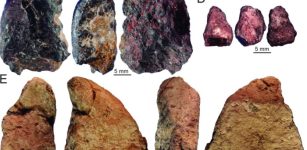 Homo Sapiens In China And What Happened When They Encountered Denisovans Or Neanderthals
Archaeology | Mar 4, 2022
Homo Sapiens In China And What Happened When They Encountered Denisovans Or Neanderthals
Archaeology | Mar 4, 2022 -
 On This Day In History: Battle Of Gaugamela – Alexander The Great Defeats Darius III Of Persia – On Oct 1, 331 BC
News | Oct 1, 2016
On This Day In History: Battle Of Gaugamela – Alexander The Great Defeats Darius III Of Persia – On Oct 1, 331 BC
News | Oct 1, 2016 -
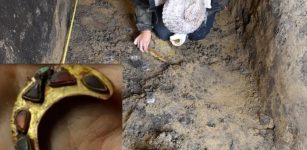 A Warrior’s Princely Tomb With Artifacts Unearthed In Romania
Archaeology | Dec 27, 2022
A Warrior’s Princely Tomb With Artifacts Unearthed In Romania
Archaeology | Dec 27, 2022 -
 On This Day In History: Eugène Dubois Who Discovered Remains Of Java Man Was Born – On Jan 28, 1858
News | Jan 28, 2017
On This Day In History: Eugène Dubois Who Discovered Remains Of Java Man Was Born – On Jan 28, 1858
News | Jan 28, 2017 -
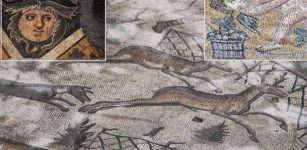 Beautiful Mosaics In Ancient City Of Germanicia
Archaeology | Sep 17, 2020
Beautiful Mosaics In Ancient City Of Germanicia
Archaeology | Sep 17, 2020 -
 Humans Spread The Black Death – Not Rats – Scientists Say
Archaeology | Feb 7, 2018
Humans Spread The Black Death – Not Rats – Scientists Say
Archaeology | Feb 7, 2018 -
 Madagascar Hippos Were Forest Dwellers – New Study
Fossils | Jul 8, 2023
Madagascar Hippos Were Forest Dwellers – New Study
Fossils | Jul 8, 2023 -
 Cave Of The Stone Sepulcher – ‘Actun Tunichil Muknal’ And Its Dark History
Featured Stories | Mar 22, 2019
Cave Of The Stone Sepulcher – ‘Actun Tunichil Muknal’ And Its Dark History
Featured Stories | Mar 22, 2019 -
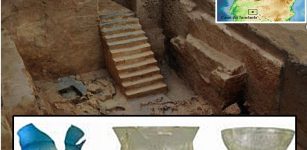 Archaeologists Highlight The Tartessos Culture’s Sustainable Construction Skills
Archaeology | Oct 4, 2024
Archaeologists Highlight The Tartessos Culture’s Sustainable Construction Skills
Archaeology | Oct 4, 2024 -
 Ancient Village Of Zalipie Where Flowers Are Painted On All Houses
Ancient Traditions And Customs | May 29, 2019
Ancient Village Of Zalipie Where Flowers Are Painted On All Houses
Ancient Traditions And Customs | May 29, 2019 -
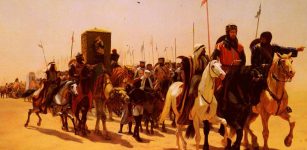 On This Day In History: Richard The Lionheart Ascended The British Throne – On July 6, 1189
News | Jul 6, 2016
On This Day In History: Richard The Lionheart Ascended The British Throne – On July 6, 1189
News | Jul 6, 2016 -
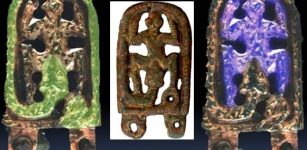 Unique Medieval Bronze Buckle Of A Snake Devouring A Frog-Like Creature Found In Brno, Czech Republic
Archaeology | Dec 13, 2023
Unique Medieval Bronze Buckle Of A Snake Devouring A Frog-Like Creature Found In Brno, Czech Republic
Archaeology | Dec 13, 2023 -
 Incredible Prehistoric Discoveries Made By A Local Community That Helped Researchers
Featured Stories | Mar 23, 2023
Incredible Prehistoric Discoveries Made By A Local Community That Helped Researchers
Featured Stories | Mar 23, 2023 -
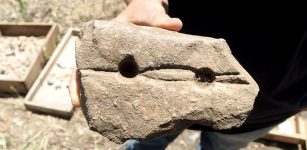 Stone Slab c. 9,000-Year-Old Used In Making Fire Discovered Not Far From Jerusalem, Israel
Archaeology | May 17, 2017
Stone Slab c. 9,000-Year-Old Used In Making Fire Discovered Not Far From Jerusalem, Israel
Archaeology | May 17, 2017 -
 Walls Of Uruk Built By Sumerian King Gilgamesh 4,500 Years Ago
Featured Stories | Nov 28, 2015
Walls Of Uruk Built By Sumerian King Gilgamesh 4,500 Years Ago
Featured Stories | Nov 28, 2015 -
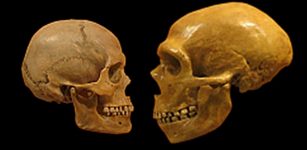 Neanderthals Had Capacity To Speak And Understand Language Like Humans
Archaeology | Mar 2, 2021
Neanderthals Had Capacity To Speak And Understand Language Like Humans
Archaeology | Mar 2, 2021

